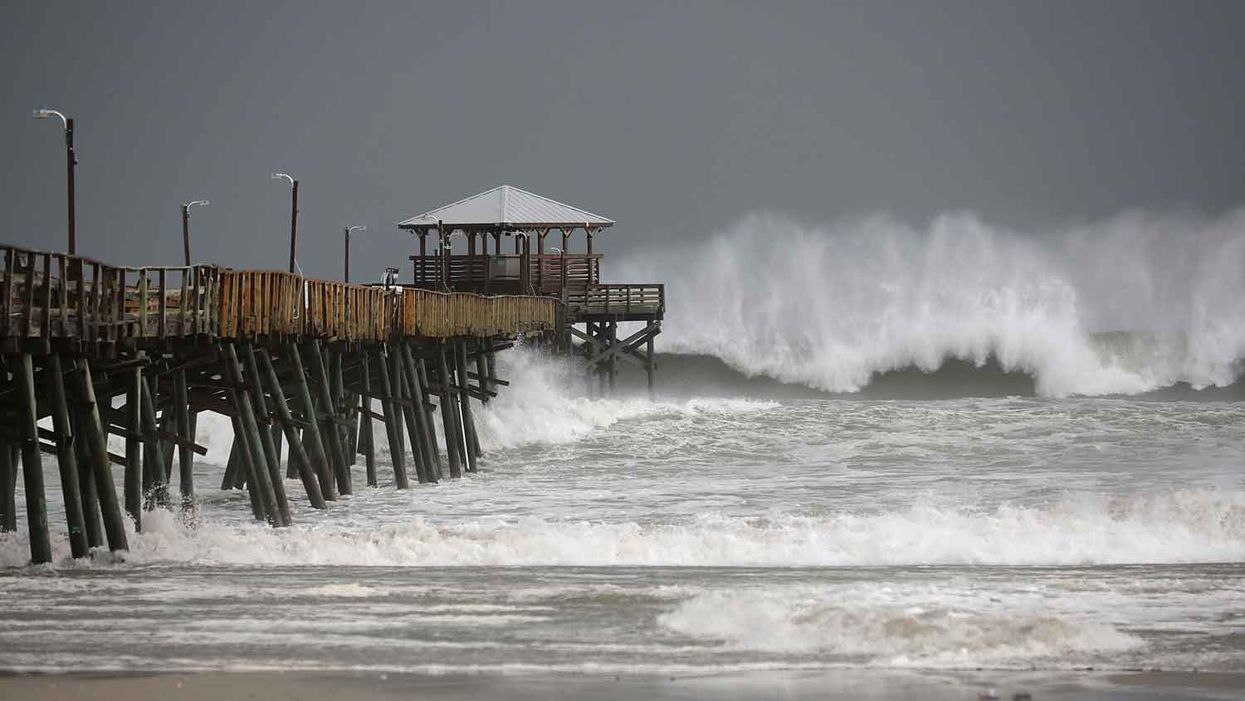Culture
Everything We Know about Hurricane Florence So Far
The massive storm is slowly moving in on the Carolinas.

13 September, 2018
10 November, 2021
The Category 2 hurricane Florence just starting to hit the Carolinas is expected to be bad, but not as catastrophic as originally expected. (Here’s hoping.) All week, though, those along the eastern coastline have been preparing for the worst. With the governor of North Carolina calling the storm “a monster” and one Atlantic weather expert predicting that it could be “an unprecedented disaster for North Carolina,” mandatory evacuation orders are in effect in many parts of the Carolinas and Virginia.
The National Weather Service dubbed Florence “the storm of a lifetime.” It’s unclear just how bad it’s going to be. The storm was originally Category 4, with winds in the range of 130 mph, but it has been downgraded twice. That said, just because the category has changed, it doesn’t mean that it should be taken lightly.
The National Weather Service dubbed Florence “the storm of a lifetime.” It’s unclear just how bad it’s going to be. The storm was originally Category 4, with winds in the range of 130 mph, but it has been downgraded twice. That said, just because the category has changed, it doesn’t mean that it should be taken lightly.
Ahead, here’s everything you need to know about Hurricane Florence.
- Hurricanes are rated on a scale between one and five, depending on the intensity of their sustained winds. As of midday yesterday, Florence’s winds were hitting speeds of 130 miles per hour, putting her in Category 4. But today, things have calmed down to a slower but still unreasonable 105 mph. Experts were predicting that winds could approach 157 mph before it hits landfall, the speed at which hurricanes become classified as Category 5. For a better sense of what that means: Hurricane Katrina in 2005 was Category 5, and Hurricane Harvey last year was Category 4. Things have calmed down, but Florence is still predicted to be massive.
- Florence is extremely slow-moving, which is an especially deadly type of hurricane. Stalled storms result in drawn-out damage; for example, Hurricane Harvey, which lasted for more than two days in the Houston area and killed nearly 100 people, was stalled.
- Storm surges in the range of 13 feet are predicted, which could cause widespread flooding. For perspective, a 12-foot storm surge is considered “life-threatening.”
- Though mandatory evacuations are ordered for over a million people in the region likely to be affected, many are staying put. A Pulitzer-winning reporter who covered Hurricane Katrina advised those who refuse to evacuate to “write your Social Security number on your arm, so officials can identify your body.”
- A terrifying gif of the eye of the storm was captured by satellite at sunset as the storm moved west. If this doesn’t inspire you to call all of your friends and family members in the Carolinas and implore them to evacuate, I don’t know what will.
- For an ongoing live briefing, head here.
- To track the storm, head here.
Stay safe out there, and if you or someone you know needs evacuation assistance or other help in relation to the storm, head to FEMA’s resource center, the United Way, or the American Red Cross.
Photo: Getty




